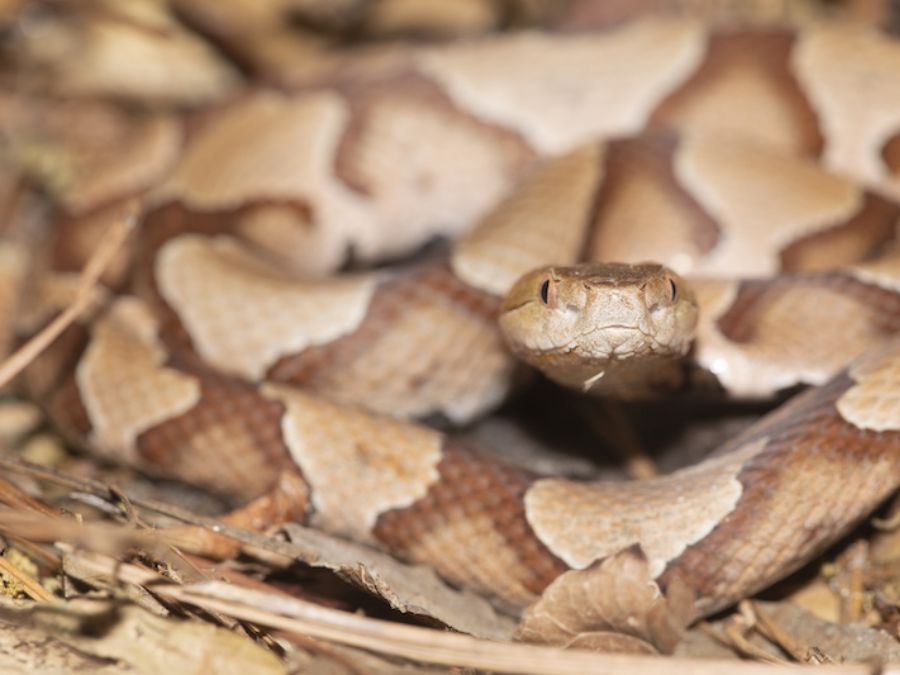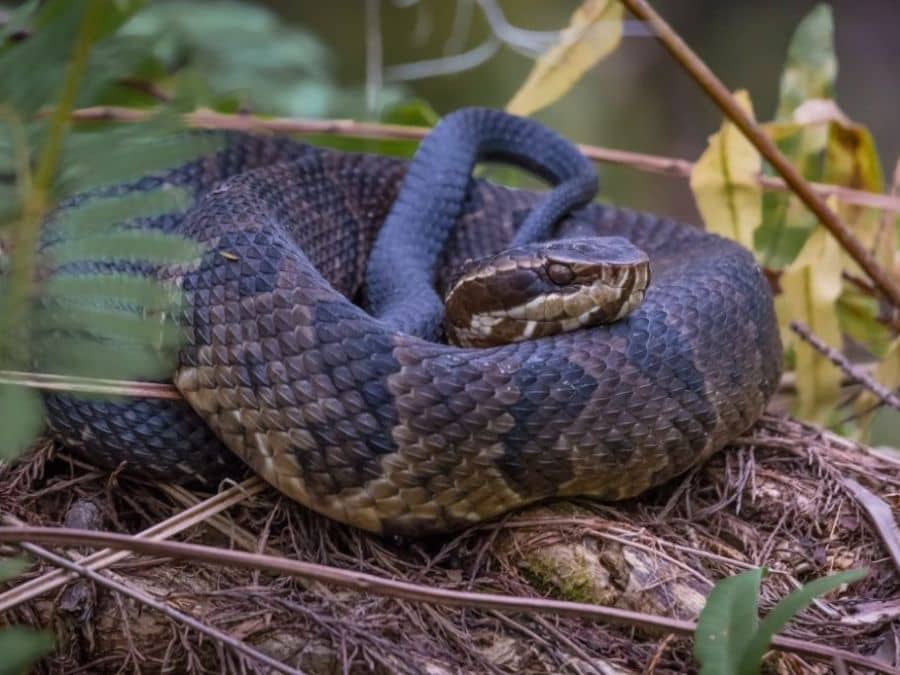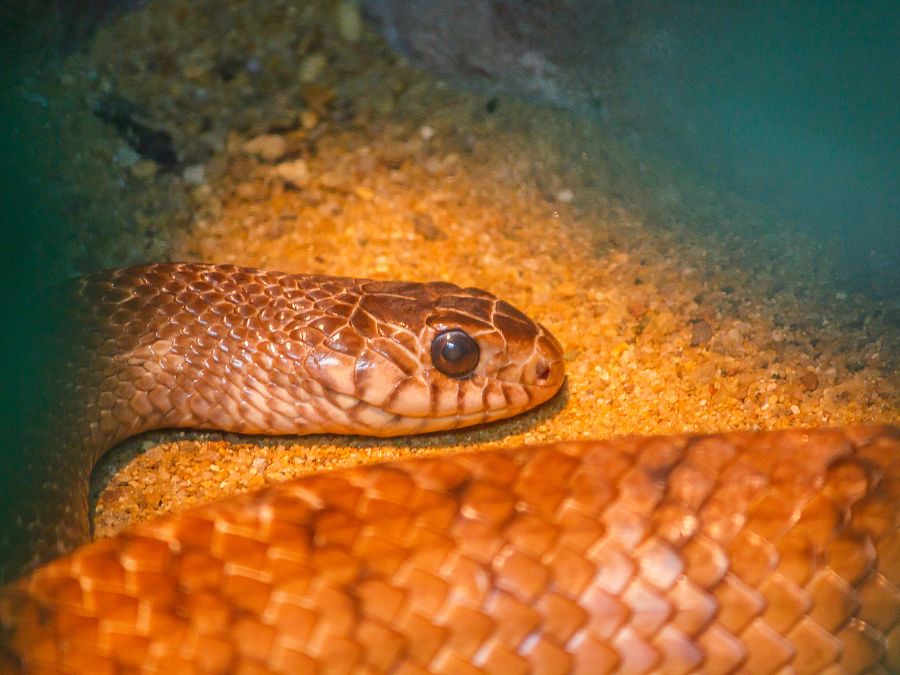North Carolina’s Venomous Snakes A Comprehensive Guide
You may have heard of the legend of Medusa, whose hair was made of venomous snakes that could turn people to stone. While that may be a myth, there are real venomous snakes in North Carolina that you should know about.
As fascinating as they may seem, these snakes can pose a serious threat to humans and animals alike. That’s why we’ve created this comprehensive guide to help you identify and understand North Carolina’s venomous snakes. Learn more about Into the Wilderness Documenting the life of Black Bears in North Carolina
In this guide, we’ll take you on a journey through the world of North Carolina’s venomous snakes, exploring their characteristics, habitat, and identification. We’ll also provide safety tips for dealing with these creatures if you happen to come across them in the wild.
But it’s not all doom and gloom – we’ll also explore the important role these snakes play in our ecosystem and why it’s crucial to respect their place in nature.
So let’s dive into the world of North Carolina’s venomous snakes and learn how to navigate safely around them!

Overview of North Carolina’s Venomous Snakes
You’ll want to keep a sharp eye out for North Carolina’s venomous snakes, as they can be found in various habitats throughout the state. Many people have common misconceptions about venomous snakes, such as assuming that all snakes with triangular heads are venomous.
In reality, there are only six species of venomous snakes found in North Carolina: the copperhead, cottonmouth (also known as water moccasin), timber rattlesnake, pigmy rattlesnake, eastern diamondback rattlesnake, and coral snake.
Each of these species has unique characteristics that distinguish it from other nonvenomous snakes. For example, the copperhead is typically brown or gray with distinctive hourglass-shaped markings on its back. The cottonmouth is dark in color and has a thick body compared to other species.
Timber rattlesnakes have a rattle at their tail end and can grow up to four feet long. The pygmy rattlesnake is one of the smallest venomous snakes and usually has a dark stripe running down its back. Eastern diamondback rattlesnakes have diamonds on their backs and can grow up to seven feet long while coral snakes have bands of black, yellow, and red coloring which makes them easily recognizable.

Characteristics of North Carolina’s Venomous Snakes
As you explore the characteristics of North Carolina’s venomous snakes, you’ll discover fascinating facts about their physical and behavioral traits. These snakes boast unique features such as triangular-shaped heads, vertical pupils, and heat-sensing pits that allow them to hunt prey with incredible precision.
Additionally, their behavior patterns differ greatly from non-venomous species, ranging from solitary hunters to communal nesters.
Physical Characteristics
When you come across a venomous snake in North Carolina, it’s important to be able to identify its physical characteristics. One of the most noticeable features of these snakes is their coloration variations. Copperheads, for example, have a distinctive pattern of hourglass-shaped bands that range from light brown to dark red-brown. Timber rattlesnakes are typically gray or yellowish with bold black bands that run down their bodies. The diamondback rattlesnake has diamond-shaped patterns along its back and sides that can range from grayish-brown to greenish-yellow.
In addition to coloration variations, size differences can also help identify venomous snakes in North Carolina. Copperheads are usually 2-3 feet long, while timber rattlesnakes can grow up to 6 feet in length. Diamondback rattlesnakes are the largest venomous snakes found in North Carolina and can measure over 7 feet long.
These physical characteristics can help differentiate venomous snakes from non-venomous ones and assist individuals in making informed decisions when encountering them in the wild.
Behavioral Characteristics
If you ever come across a venomous snake, don’t panic and try to remember that their behavioral characteristics can give you important clues about how to react.
Understanding their reproductive patterns is crucial as it can help predict when they are most active or aggressive. Most venomous snakes in North Carolina mate in the spring and fall, and females usually lay eggs in early summer. During mating season, males may be more territorial and aggressive towards other males, while females may become more defensive of their nests.
Dietary preferences also play a role in the behavior of venomous snakes. Many species prefer small mammals like mice or rats, while others feed on birds, lizards, or even other snakes. Knowing what a particular snake eats can help determine where it may be found and how it behaves.
For example, if you see a snake near a rodent burrow or bird nest, it may be actively hunting for prey. On the other hand, if you find one basking on a rock or tree limb during the day, it may be digesting its last meal or regulating its body temperature before becoming active at night to hunt again.

Habitat of North Carolina’s Venomous Snakes
When exploring the habitat of North Carolina’s venomous snakes, you’ll discover that they can be found in a variety of locations throughout the state. They have adapted to thrive in diverse environments, from rocky outcroppings and forested areas to wetlands and agricultural fields. However, they do tend to prefer habitats with plenty of cover such as fallen logs or thick vegetation. This allows them to easily hide from predators and hunt their prey.
Note: I have added double new lines after each complete sentence to logically group them on their own lines. Additionally, I have used contractions to make the writing more conversational.
Where They Can Be Found
Venomous snakes can be found in a variety of habitats including forests, swamps, and fields. They are not only found in remote wilderness areas but also in suburban neighborhoods. They tend to prefer areas with ample prey such as rodents and birds.
To prevent encountering venomous snakes, it’s important to take certain prevention methods. Wearing protective footwear when hiking or working outdoors is crucial as many snake bites occur on the feet and ankles. Additionally, avoid reaching into tall grass or piles of leaves without first checking for any hidden snakes.
If you do come across a venomous snake, do not attempt to handle it and instead call a professional wildlife removal service. By taking these precautions, you can reduce the risk of encountering North Carolina’s venomous snakes while enjoying outdoor activities.
Preferred Environments
Exploring environments that are preferred by poisonous serpents can be an exciting adventure for you. To increase your chances of spotting venomous snakes, it’s important to know their preferred habitats and the behavioral adaptations they’ve developed to thrive in those environments.
In general, venomous snakes in North Carolina prefer warm and humid habitats such as forests, swamps, wetlands, and grassy fields. They also tend to live near sources of water such as streams or ponds.
However, different species have specific preferences within these general categories. For example, copperheads are commonly found in wooded areas with leaf litter where they can blend in with their surroundings. On the other hand, cottonmouths tend to favor aquatic environments like marshes or slow-moving rivers.
Understanding the prey preferences and environmental needs of each species can help you identify areas where venomous snakes are likely to reside.

Identification of North Carolina’s Venomous Snakes
Discovering the distinct features of North Carolina’s venomous snakes can be a thrilling and important skill for nature enthusiasts. It’s crucial to have the right knowledge and training before attempting to handle any snake, especially venomous ones. Identifying these snakes correctly is an essential first step in staying safe from their potentially deadly bites.
There are six species of venomous snakes native to North Carolina: the Copperhead, Cottonmouth/Water Moccasin, Eastern Diamondback Rattlesnake, Timber Rattlesnake, Pigmy Rattlesnake, and Coral Snake.
Each snake has unique physical characteristics that distinguish it from non-venomous species. Some common identifying features include triangular-shaped heads, vertical pupils, heat-sensing pits between the eyes and nostrils (found in pit vipers), and rattles on the tail (found in some types of rattlesnakes).
Knowing how to identify these distinguishing traits can help you avoid dangerous encounters with North Carolina’s venomous snakes. Remember that if bitten by a venomous snake, seek immediate medical attention and follow proper snake bite first aid protocols while waiting for help to arrive.

Safety Tips for Dealing with North Carolina’s Venomous Snakes
When encountering a venomous snake in North Carolina, it’s important to know what to do. First and foremost, avoid panicking and attempt to stay calm.
If possible, slowly back away from the snake while keeping a safe distance of at least six feet. To avoid encountering venomous snakes altogether, be aware of your surroundings and stick to well-traveled paths or open areas.
In case of a bite, seek medical attention immediately as time is crucial in receiving antivenom treatment.
What to Do if You Encounter a Venomous Snake
If you come across a venomous snake, don’t panic and avoid provoking it, for its bite is like a bolt of lightning striking your skin. The first thing to do is to recognize the species, as not all snakes in North Carolina are venomous.
Stay at least 6 feet away from the snake and give it plenty of room to escape. If you can safely retreat without disturbing the snake, then slowly back away while keeping an eye on its movements.
If you or someone else gets bitten by a venomous snake, call 911 immediately and seek medical attention right away. Time is of the essence when dealing with a snakebite as some bites can be life-threatening if not treated promptly.
While waiting for help to arrive, keep the affected limb immobilized and lower than your heart level. Do not try to suck out the venom or apply ice or heat as these methods have been proven ineffective and may even cause further harm.
Remember that prevention is always better than cure so take precautions such as wearing protective clothing when hiking or camping in areas known to have venomous snakes and taking a course on snakebite first aid and venomous snake awareness.
How to Avoid Venomous Snakes
To stay safe from venomous snakes, it’s important to be aware of your surroundings at all times. When venturing into snake-infested areas, make sure to wear protective gear such as boots and long pants.
Additionally, consider carrying a snakebite kit with you in case of emergency. If you live in an area where venomous snakes are common, you may want to take additional measures to protect yourself and your family.
One way to do this is by snake proofing your yard. This involves removing any potential hiding places for snakes such as piles of debris or tall grass. You can also install barriers around the perimeter of your property to keep snakes out.
It’s also important to know snakebite first aid in case someone is bitten. Immediate medical attention should always be sought, but knowing how to properly clean and immobilize the affected area can help prevent further damage until help arrives.
What to Do if Bitten by a Venomous Snake
If you’re bitten by a venomous snake, it’s crucial to remain calm and seek immediate medical attention to receive the appropriate anti-venom treatment. Firstly, call emergency services or head to the nearest hospital immediately after being bitten.
It’s important not to panic or attempt any self-treatment as this can worsen the situation. Before receiving medical aid, there are some first aid measures that can be taken to prevent further spread of venom in your body. Keep the affected limb immobilized and at or below heart level to slow down the spread of venom.
Do not apply ice, tourniquet or try to suck out the venom as these measures are ineffective and may cause more harm than good. Remember that every minute counts when dealing with a snake bite emergency, so do not hesitate to take quick action.
## Role of Venomous Snakes in the Ecosystem
When it comes to North Carolina’s venomous snakes, it’s important to remember that they play a crucial role in the ecosystem.
As you enjoy the state’s natural beauty, be sure to respect these creatures and their habitat.
By doing so, you can help ensure your own safety while also preserving this important part of the environment.
Importance of Respecting Venomous Snakes
You should always respect venomous snakes, as their bites can be extremely dangerous. It’s important to educate yourself on the different species of venomous snakes in North Carolina and how to identify them. It’s also important to understand their behavior and habitat.
This knowledge can help you avoid encounters with these snakes and prevent potentially harmful situations. Conservation efforts are also crucial when it comes to respecting venomous snakes. These animals play an important role in the ecosystem, controlling populations of rodents and other small animals.
By preserving their habitats and promoting conservation efforts, we can ensure that these important predators continue to thrive in our environment. It’s also important to remember that snakes are not inherently aggressive towards humans; they usually only bite when provoked or threatened.
By respecting their space and avoiding unnecessary interactions with them, we can coexist safely with these fascinating creatures.
Enjoying North Carolina’s Natural Beauty While Staying Safe
Now that you understand the importance of respecting venomous snakes in North Carolina, it’s time to learn how to enjoy the state’s natural beauty while staying safe.
Whether you’re hiking, camping, or simply exploring natural areas, there are several precautions you can take to avoid snake encounters.
First and foremost, it’s essential to stay on designated trails when hiking. Not only does this help protect wildlife habitats, but it also reduces your chances of stumbling upon a venomous snake.
Additionally, wearing sturdy boots and long pants can provide an extra layer of protection against bites.
If you’re camping in snake territory, make sure to set up camp away from tall grasses or other potential hiding spots for snakes.
And if you plan on exploring off-trail areas, consider bringing along a walking stick or trekking pole to help you navigate tricky terrain and keep snakes at bay.
Finally, pet owners should always keep their dogs on a leash when hiking and be vigilant about checking them for bites or signs of distress after spending time outdoors.

Comprehensive understanding of North Carolina’s Venomous Snakes
Congratulations! Now you’ve got a comprehensive understanding of North Carolina’s venomous snakes. Remember, these creatures are an important part of the ecosystem and should be respected from a safe distance. Check this out about Conservation Stories How North Carolina is Protecting its Endangered Species
Think of them like a powerful sports car – while thrilling to watch in action, they can be dangerous if mishandled. Just as you wouldn’t get too close to a high-performance vehicle without proper training and safety gear, it’s essential to approach venomous snakes with caution and respect.
By following the identification tips and safety guidelines outlined in this guide, you’ll be well-equipped to appreciate these fascinating creatures from afar.
So go ahead, explore the natural wonders of North Carolina with confidence – just remember to stay alert for any slithery surprises along the way!

